Last Updated on 6 months by Francis
Space exploration has always been an area of fascination for humankind. Over the years, we have developed advanced technologies that enable us to study and understand the universe like never before. Two of the most significant tools in this regard are spectroscopy and infrared technology.
Spectroscopy involves the study of the interaction between matter and electromagnetic radiation. Infrared technology, on the other hand, utilizes the portion of the electromagnetic spectrum that falls between visible light and radio waves. Together, they form a powerful pair of tools that enhance our ability to explore the cosmos.
Both spectroscopy and infrared technology have numerous applications in space exploration. They allow us to gather valuable data about distant celestial objects, study their chemical composition, and understand their behavior and interactions within the universe.
Contents
Key Takeaways
- Spectroscopy and infrared technology are crucial tools in space exploration.
- They allow us to study the chemical composition and behavior of celestial objects.
- These technologies have numerous applications in space missions and space observation.
- Spectroscopy and infrared technology enable us to make groundbreaking discoveries about the universe and its origins.
- Advancements in these technologies will continue to drive future space exploration missions.
Advancements in Spectroscopy for Space Exploration
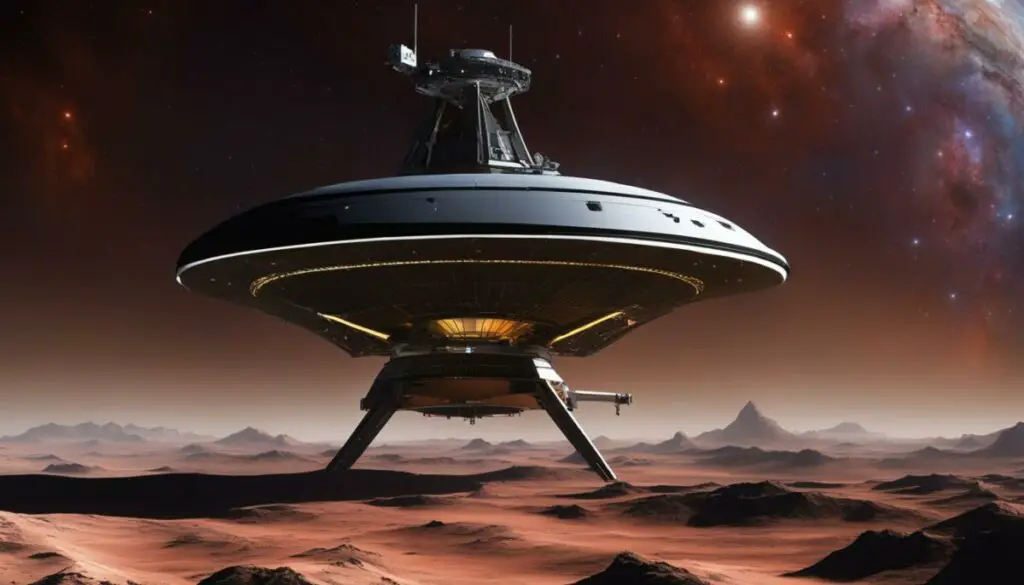
Spectroscopy has undergone significant advancements in recent years, making it an essential tool for space exploration. These technological advancements have enabled scientists to study celestial objects in unprecedented detail, providing insights into their composition, temperature, and density.
One of the significant benefits of using spectroscopy in space is its ability to identify the chemical makeup of celestial objects. By analyzing the light spectrum emitted or absorbed by these objects, scientists can identify the presence of specific elements and compounds. This information is crucial in determining the origin and evolution of these objects, such as stars and planets.
Spectroscopy Techniques and Their Advancements
There are several spectroscopy techniques used in space exploration, including:
| Technique | Advancements |
|---|---|
| UV and Visible Spectroscopy | The use of CCD detectors has significantly improved the sensitivity and resolution of UV and visible spectroscopy. This has enabled scientists to detect the faintest signals emitted by distant celestial objects. |
| Infrared Spectroscopy | The development of high-resolution infrared telescopes, such as the James Webb Space Telescope, has expanded our ability to analyze the composition of celestial objects. Infrared spectroscopy is particularly useful in studying cooler objects, such as comets and asteroids. |
| X-ray Spectroscopy | The use of X-ray spectroscopy has allowed scientists to study the high-energy processes that occur in celestial objects, such as black holes and neutron stars. The Chandra X-ray Observatory has provided unprecedented insight into these objects. |
These advancements have revolutionized our ability to study the universe, revealing new insights into the mysteries of space.
The Benefits of Spectroscopy in Space
Spectroscopy has several benefits in space exploration, including:
- Identifying the composition and characteristics of celestial objects, aiding in our understanding of their origins and evolution.
- Detecting the presence of organic molecules in the universe, providing clues about the potential for life beyond Earth.
- Measuring the temperature, density, and other physical properties of celestial objects, contributing to our understanding of the universe’s structure and behavior.
Overall, the advancements in spectroscopy for space exploration have enabled scientists to gather valuable data about the universe, driving our understanding of space and its mysteries.
Utilizing Spectroscopy in Space Missions

Spectroscopy has been an essential tool in space exploration for decades. Its ability to analyze the light spectra emitted by celestial objects provides valuable information about their composition, temperature, and density. In combination with infrared technology, spectroscopy has enabled scientists to gather new insights into the universe’s mysteries and aid in the search for extraterrestrial life.
One of the primary applications of spectroscopy and infrared technology in space is the study of distant planets and asteroids. By analyzing the chemical makeup of these objects, scientists can determine their potential habitability and whether they contain the necessary building blocks of life. For example, the Mars Curiosity Rover includes an infrared spectrometer that has allowed scientists to identify the presence of organic molecules on the planet’s surface, providing evidence of possible past or present life.
Another critical application of infrared technology in space missions is the study of stars. Infrared telescopes can detect celestial objects that emit or reflect infrared radiation, such as protostars, brown dwarfs, and supernovae. This technology has enabled scientists to study the early stages of star formation and better understand the life cycle of stars. For example, the Spitzer Space Telescope, launched in 2003, uses infrared technology to study the formation and evolution of galaxies, stars, and planetary systems.
| Application | Benefits |
|---|---|
| Chemical analysis of planets and asteroids | Determines potential habitability and presence of building blocks of life |
| Study of stars | Enables study of early stages of star formation and better understanding of the life cycle of stars |
Advanced spectroscopy techniques are also used in space missions to study cosmic phenomena such as black holes and supernovae. For example, the Chandra X-ray Observatory uses high-resolution spectroscopy to study the X-ray emissions from black holes, providing insights into their structure and behavior. Spectroscopy has also been used to study the expansion of the universe, allowing scientists to measure the distances to distant galaxies and map the large-scale structure of the universe.
Overall, spectroscopy and infrared technology have revolutionized our understanding of the universe and have become essential tools in space exploration. By utilizing these technologies in space missions, we can continue to unravel the mysteries of the cosmos and drive future scientific advancements.
Infrared Technology for Space Observation
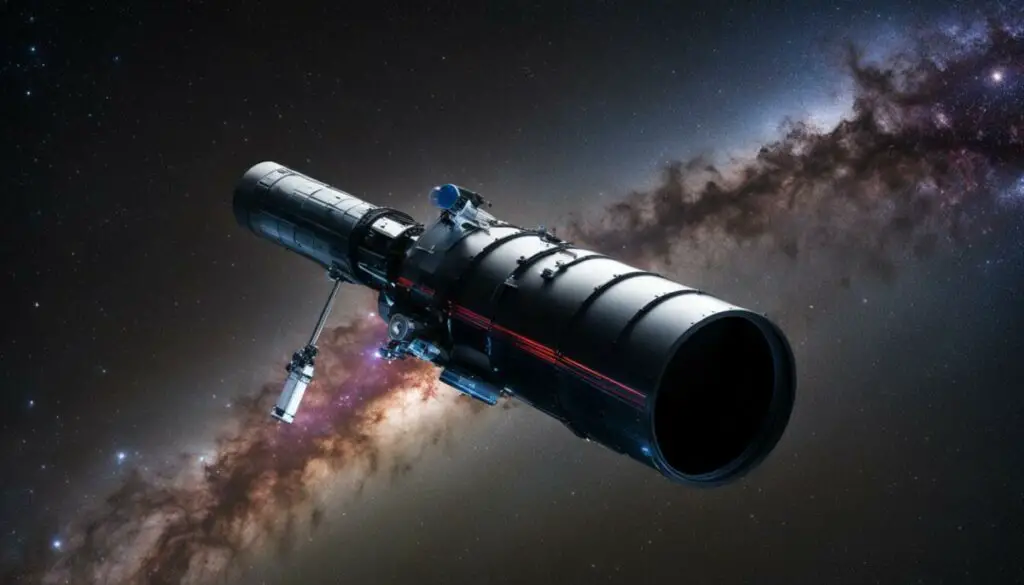
Infrared technology plays a critical role in space observation, allowing us to study celestial objects beyond the visible spectrum. By detecting infrared radiation emitted or reflected by these objects, scientists can gather valuable data about their composition, temperature, and physical properties.
One of the primary applications of infrared technology in space is the study of planets and moons. Infrared sensors can detect the heat signatures given off by these celestial bodies, providing insight into their surface features and geological activity. Infrared telescopes are also used to observe the atmospheres of planets, revealing details about their composition and temperature.
Another important use of infrared technology in space is the study of stars and galaxies. Infrared telescopes can detect the radiation emitted by distant stars, allowing scientists to study their temperature and chemical composition. Infrared observations have also revealed the existence of previously unknown galaxies, providing valuable insights into the structure and evolution of the universe.
In short, infrared technology has revolutionized our ability to observe and analyze celestial objects, providing a wealth of data that cannot be obtained through visible light observations alone.
Unraveling Astronomical Wonders with Spectroscopy
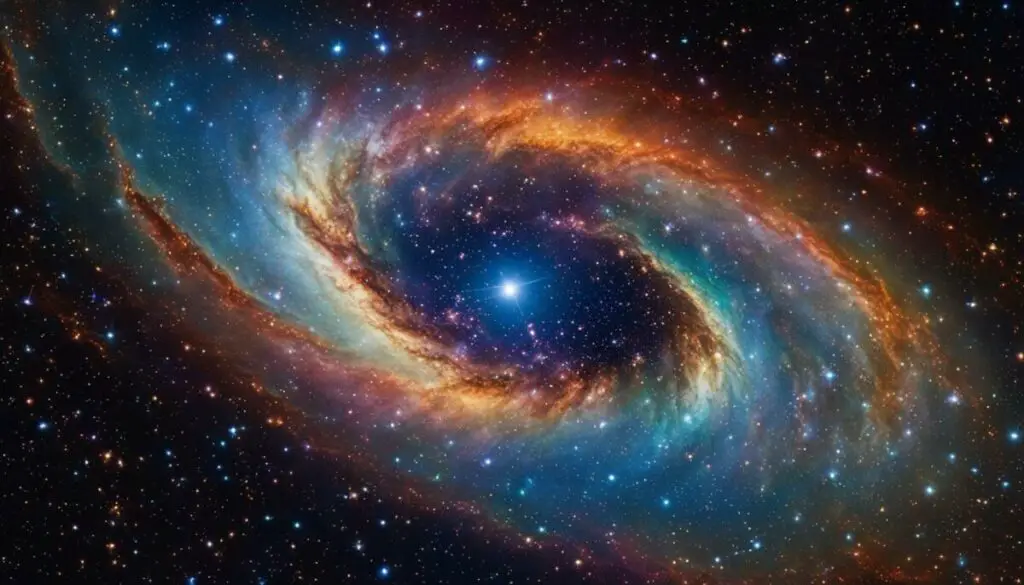
Space exploration has enabled us to unravel mysteries of the universe that were once thought impossible to solve. Spectroscopy has played a crucial role in this journey of discovery, providing us with insights into the composition, temperature, and other physical properties of celestial objects. Its continued advancements have enhanced our ability to study the universe and made possible remarkable discoveries.
Spectroscopy in space has enabled scientists to identify elements present in distant planets, moons, asteroids, and stars. Through analyzing the light they emit or reflect, spectroscopic analysis is used to identify chemical elements and compounds. By determining which elements are present, scientists are able to deduce the possible atmospheric composition of these celestial objects. This has led to incredible discoveries such as the presence of water on certain planets and moons, providing exciting prospects for potential life forms.
One such discovery was the detection of the first exoplanet in 1995, marking a significant milestone in astronomy. Since then, spectroscopy has been used to discover thousands of exoplanets by detecting the slight dimming of light that occurs when an orbiting planet passes in front of its host star.
Spectroscopy has also allowed us to study galaxies and cosmic phenomena such as supernovae and black holes. By analyzing the light emitted by these objects, spectroscopy is used to determine their temperature, density, and chemical composition. This has led to our understanding of the universe’s evolution and has been integral in the development of theories about the origins of the universe.
Astronomical Constants Determined through Spectroscopy (in nm)
| Element | Wavelength | Emission Spectrum |
|---|---|---|
| Hydrogen | 656.28 | H-Alpha |
| Helium | 587.56 | D3 |
| Oxygen | 557.73 | O-III |
| Nitrogen | 654.79 | N-III |
The advancements in spectroscopy have made it possible to study celestial objects in more detail than ever before, such as the detailed analysis of asteroid Itokawa’s surface. It allowed scientists to determine the mineralogy and structure of the asteroid, contributing to our understanding of the origins of the solar system.
The use of spectroscopy in space exploration has brought us closer to understanding our universe’s vastness while providing us with valuable insights into its composition and evolution. Through its continued advancements, we can hope to unlock even more secrets hidden within the vast expanse of space.
The Importance of Infrared and Spectroscopy in Space Research
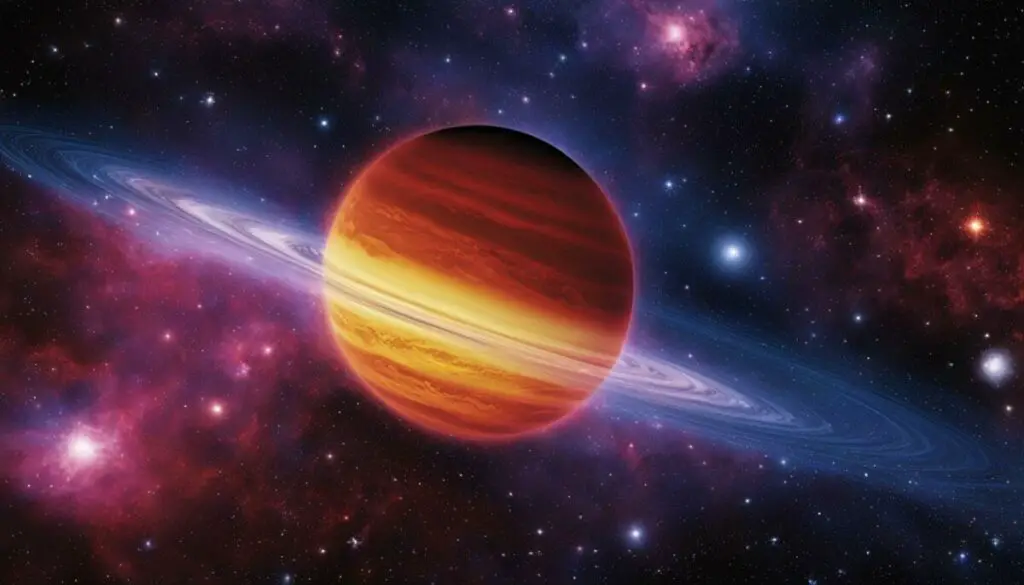
The utilization of spectroscopy and infrared technology in space research is crucial in providing a deeper understanding of the universe. These tools allow scientists to gather valuable data about distant celestial objects that cannot be easily observed through traditional telescope methods.
Spectroscopy is particularly valuable in identifying the composition, temperature, and density of celestial objects. The benefits of using spectroscopy in space exploration are immense, as it enables scientists to uncover hidden characteristics of distant objects and makes it easier to identify planets that may harbor life.
Infrared technology is equally important in space research, as visible light can be obstructed by cosmic dust and other particles. Infrared technology allows for clear detection of objects that emit or reflect infrared radiation, providing vital information about the object’s temperature, chemical composition, and other distinguishing properties.
| Benefit | Explanation |
|---|---|
| Improved understanding of the universe | Spectroscopy and infrared technology provide us with a better understanding of celestial objects and their properties, leading to new discoveries and breakthroughs in space exploration. |
| Identification of potentially habitable planets | Spectroscopy allows us to identify planets that may have the conditions necessary to support life, including the presence of water, oxygen, and other key elements. |
| Ability to study objects not visible to the naked eye | Infrared technology allows us to observe and analyze objects that would otherwise be hidden by cosmic dust or other particles. |
Without spectroscopy and infrared technology, our understanding of the universe would be limited, and many discoveries would be left undiscovered. By harnessing the power of these tools, we can continue to push the boundaries of space exploration and gain a deeper insight into the mysteries of the cosmos.
Cutting-Edge Techniques in Spectroscopy and Infrared Technology
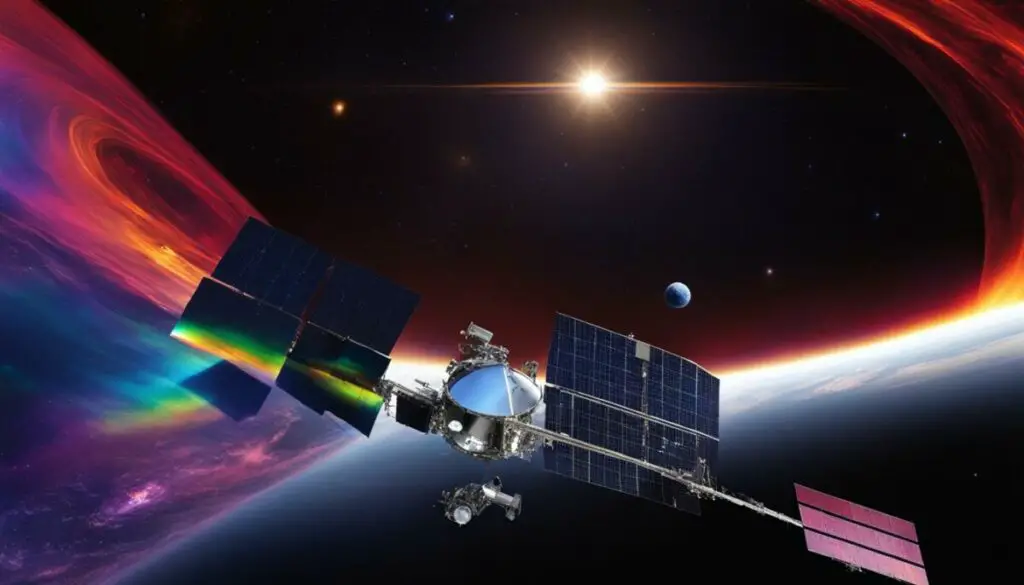
The field of spectroscopy and infrared technology is continually evolving, with new techniques and instruments being developed to enhance our understanding of the universe. Here are some of the latest cutting-edge techniques used in space exploration:
Hyperspectral Imaging
Hyperspectral imaging is a technique that uses a high-resolution spectrometer to capture images of different wavelengths of light. This allows scientists to analyze the chemical and physical properties of celestial objects with incredible detail. Hyperspectral imaging has been used to identify minerals on the surface of Mars, study the composition of comets and asteroids, and even detect water on the moon.
Fourier Transform Spectroscopy
Fourier Transform Spectroscopy (FTS) is a technique that measures the wavelengths of incoming light and then uses a mathematical algorithm to transform the data into a spectrum. FTS has been used in space-based observatories such as the Herschel Space Observatory and the James Webb Space Telescope to study the composition of galaxies, stars, and planets.
Adaptive Optics
Adaptive optics is a technique that uses deformable mirrors to correct for distortion caused by Earth’s atmosphere. This allows ground-based telescopes to achieve much higher resolution and clarity than previously possible. Adaptive optics has been used to study the surfaces of planets and moons, track asteroids and comets, and even image the atmospheres of exoplanets.
“The development of these cutting-edge techniques has revolutionized our ability to study the universe, and we can expect even more exciting breakthroughs in the future.”
These are just a few of the many cutting-edge techniques being used in spectroscopy and infrared technology for space exploration. As technology continues to advance, we can expect to gain even more insights into the mysteries of the cosmos.
Spectroscopy and Infrared Technology in Future Space Missions

The utilization of spectroscopy and infrared technology in current space missions has yielded valuable data and insights into the universe. However, it is just the beginning, and the potential for future advancements is vast.
As technology continues to evolve, the ability to gather more extensive and accurate data will increase significantly. Advancements in spectroscopy techniques, such as higher spectral resolution and sensitivity, will provide scientists with more detailed information about the composition, temperature, and density of celestial objects.
Infrared technology is also advancing, with the development of smaller and more powerful sensors that can detect even fainter signals. Future space missions are likely to incorporate these cutting-edge technologies, allowing scientists to study the universe in unprecedented detail.
One potential application of these technologies is in the search for extraterrestrial life. Spectroscopy can analyze the composition of planets in distant solar systems, providing clues about their potential habitability. Infrared technology can also detect the presence of organic compounds, which could indicate the presence of life.
| Benefits of Future Advancements in Spectroscopy and Infrared Technology: | Applications in Future Space Missions: |
|---|---|
| – Increased spectral resolution and sensitivity | – Studying the composition of planets in distant solar systems |
| – More extensive and accurate data | – Identifying the presence of organic compounds on planets |
| – Improved ability to detect faint signals | – Mapping the distribution of dark matter in the universe |
| – Enhanced ability to study cosmic phenomena such as black holes | – Investigating the origins of the universe |
The potential applications of spectroscopy and infrared technology in future space missions are vast, from studying the origins of the universe to detecting signs of life on distant planets. These technologies will undoubtedly play a critical role in driving future space exploration endeavors, paving the way for groundbreaking discoveries and expanding our understanding of the cosmos.
Spectroscopy and Infrared Technology: Implications in Space Exploration
As we have explored in this article, the technological advancements in spectroscopy and infrared technology have revolutionized our understanding of the universe and its composition. However, the implications of these tools extend far beyond space exploration alone.
“The technology developed for space exploration has spinoff benefits in fields as diverse as health, transport, energy, environment, communications, and materials.”
The statement above by the European Space Agency (ESA) emphasizes the broad impact that space technology has on the world. Innovations in spectroscopy and infrared technology have led to improvements in fields such as medical imaging, environmental monitoring, and industrial processing.
Moreover, the research conducted with these tools has given us a better understanding of our place in the universe and our origins. The data gathered from spectroscopic analysis has allowed us to infer the early stages of the universe and the formation of galaxies. It has also provided a glimpse into the chemical composition of planets and their potential to support life.
The implications of spectroscopy and infrared technology in space are not limited to scientific advancements alone. These tools have inspired technological innovations in instrument design, data processing, and remote sensing. They have also contributed to international collaboration and knowledge-sharing among scientists and researchers.
Overall, the implications of spectroscopy and infrared technology in space exploration go far beyond the study of celestial objects. They have the potential to drive progress across a wide range of fields, improve our quality of life, and deepen our understanding of the universe we inhabit.
The image above, captured by NASA’s Spitzer Space Telescope, showcases the beauty of the universe and the potential for discovery through the use of infrared technology in space exploration.
Conclusion
In conclusion, the use of spectroscopy and infrared technology in space exploration has revolutionized our understanding of the universe. Through recent advancements in spectroscopic techniques, scientists have been able to identify the composition, temperature, and density of celestial objects, aiding in the search for extraterrestrial life and understanding the origins of the universe.
Utilizing spectroscopy and infrared technology in space missions has proven to be invaluable, with applications in analyzing the chemical makeup of distant planets, asteroids, and stars. Infrared sensors and telescopes have enabled scientists to study celestial objects that were previously invisible through traditional optical telescopes.
The significance of spectroscopy and infrared technology in space research cannot be overstated. These tools have enabled scientists to gather valuable data about distant celestial objects, contributing to our understanding of the universe and driving future space exploration missions.
Looking ahead, the role of spectroscopy and infrared technology in future space missions is promising. With potential advancements on the horizon, the impact on our understanding of the cosmos and its potential applications in upcoming space exploration endeavors are vast. Harnessing the power of spectroscopy and infrared technology will continue to contribute to scientific advancements, technological innovations, and our overall understanding of the universe.
Stay Curious About Space Exploration with Spectroscopy and Infrared Technology
With so much left to explore and discover, the possibilities for future discoveries using spectroscopy and infrared technology are boundless. We hope this article has given you insight into the valuable role these technologies play in space exploration. Stay curious and keep exploring the wonders of the universe!
FAQ
What is spectroscopy?
Spectroscopy is the study of the interaction between matter and electromagnetic radiation. It involves using instruments called spectrometers to measure and analyze the properties of light, such as its intensity, wavelength, and frequency, emitted or absorbed by various substances.
How is spectroscopy used in space exploration?
Spectroscopy is used in space exploration to gather valuable data about celestial objects. By analyzing the light emitted or reflected by these objects, scientists can determine their composition, temperature, density, and other key characteristics. This information helps in understanding the formation and evolution of stars, galaxies, and planets, as well as in the search for signs of extraterrestrial life.
What is infrared technology?
Infrared technology involves the detection and analysis of infrared radiation, which is a form of electromagnetic radiation with longer wavelengths than visible light. It allows scientists to observe objects and phenomena that are not visible through traditional optical telescopes, such as cooler stars, interstellar dust clouds, and distant galaxies.
How is infrared technology used in space observation?
Infrared technology is used in space observation through the deployment of infrared sensors and telescopes. These instruments can detect and measure the infrared radiation emitted or reflected by celestial objects. By analyzing this radiation, scientists can gain insights into the temperature, composition, and other properties of these objects, providing a more comprehensive understanding of the universe.
What are the benefits of utilizing spectroscopy and infrared technology in space missions?
Utilizing spectroscopy and infrared technology in space missions offers several benefits. It allows scientists to study celestial objects beyond what can be observed in visible light, providing a more complete picture of the universe. These technologies also help in identifying the presence of specific molecules and compounds, aiding in the search for habitable environments and potential signs of life in space. Moreover, spectroscopy and infrared technology enable scientists to explore distant regions of the universe that would otherwise be inaccessible using traditional optical instruments.









